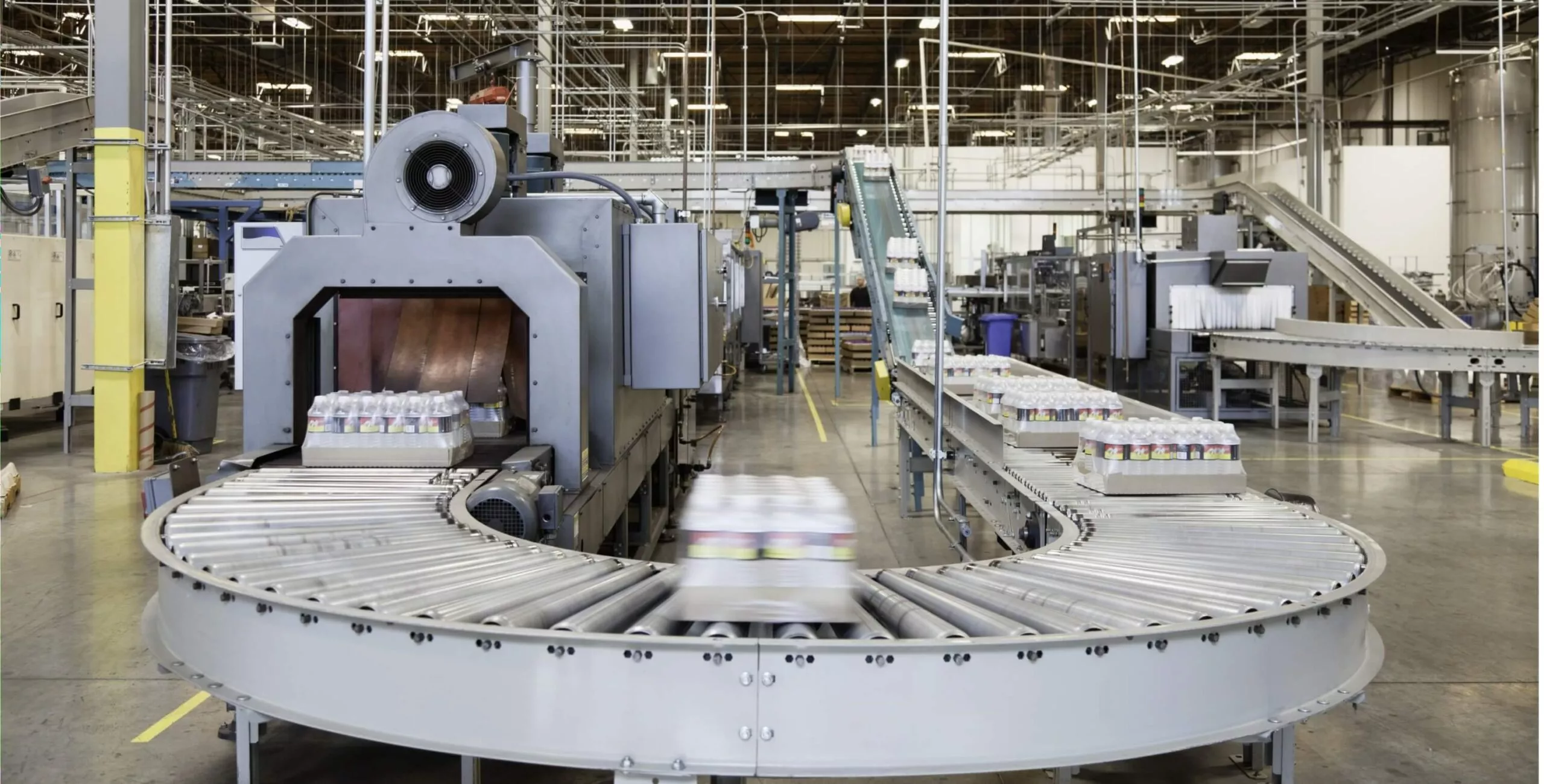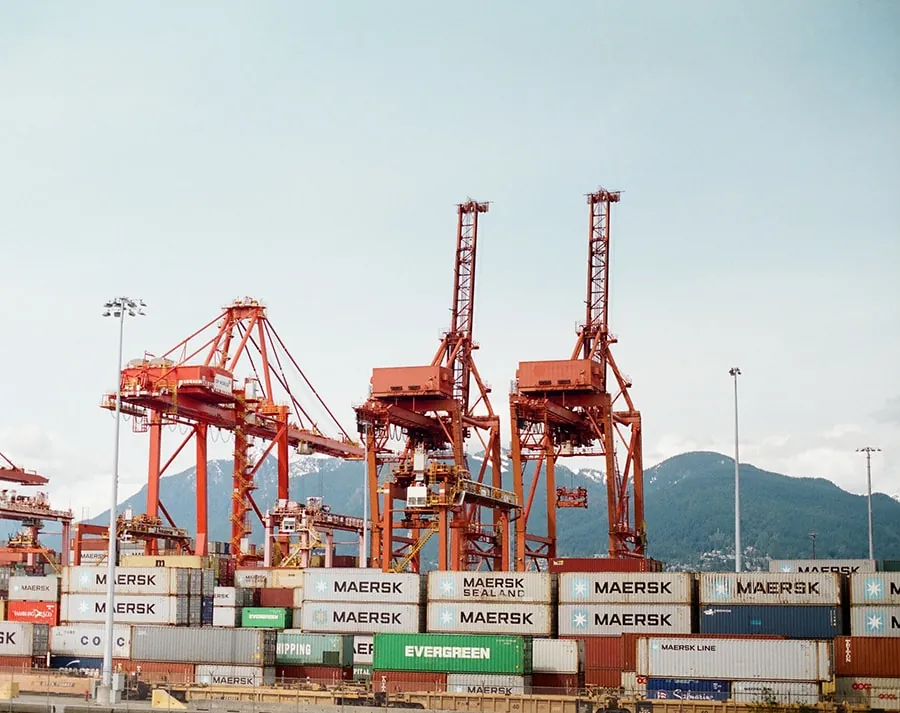When it comes to manufacturing, quality is everything. In industries like aerospace, defense, and medical device production, quality isn’t just a priority—it’s a must. But even in less high-stakes environments, manufacturers are always looking at ways to reduce defects, minimize rework, cut down on scrap, and control related costs. One way to keep track of these efforts is by using First Pass Yield (FPY), a metric that gives a clear picture of how well a process is running without the need for rework.
First Pass Yield is a simple but powerful measurement that tells manufacturers how many parts come out right on the first go. It answers an important question: How well are we producing quality parts the first time around? If you’re not hitting the mark on your FPY, you’re likely facing more errors and extra work that could be avoided.
In this blog, we’re going to take a closer look at how to improve FPY and how you can calculate it to get a better handle on your manufacturing processes. By understanding this metric and learning how to boost it, you’ll be able to spot areas of improvement, reduce costs, and enhance overall efficiency.
So, without further ado, let’s dive into how FPY works and how you can improve it in your operations.
What is First Pass Yield (FPY)?
First pass yield (FPY) is a way to measure how well a manufacturing process is working by looking at the number of good parts produced in the first attempt without needing rework or repairs. To calculate FPY, you divide the number of acceptable parts by the total number of parts made during a production run.
When your first pass yield is high, it shows that your process is consistent, efficient, and produces quality results. On the other hand, a low FPY might mean there are issues in the process that need attention, such as material problems, design flaws, or human errors. Tracking FPY regularly can help businesses identify and fix these issues early, improve overall productivity, and reduce waste. It’s a simple yet powerful metric for ensuring smooth operations and delivering products that meet expectations.
First Pass Yield, Throughput Yield, and Rolled Throughput Yield
First Pass Yield, often called Throughput Yield, measures how many units or parts are made correctly the first time without needing rework or corrections. These two terms are interchangeable and are used to understand how well a process performs in producing defect-free items right from the start.
Rolled Throughput Yield (RTY) goes beyond FPY by evaluating the overall efficiency of the entire production process. It helps determine how many defect-free parts can be produced per hour, factoring in the available resources like machines, materials, and labor. This metric provides a more detailed view of production quality and consistency over multiple steps or stages in the process.
Both FPY and RTY are essential for improving how a manufacturing plant operates. They help managers identify problem areas, such as bottlenecks or high defect rates, so they can make adjustments to improve production flow and reduce waste. By tracking these metrics, businesses can aim to boost productivity, lower costs, and ultimately increase revenue.
These metrics offer a simple yet powerful way to monitor performance, guide decision-making, and work towards a smoother and more efficient manufacturing process.
Metrics Connected to First Pass Yield (FPY)
First Pass Yield (FPY) is a helpful metric on its own, but it works best when analyzed alongside other important manufacturing indicators. Together, these metrics give a clear picture of how well the production process is running and where improvements might be needed. Let’s take a closer look at some of these related metrics and how they influence FPY.
-
Rework Rate
The rework rate shows the percentage of products that need additional work or corrections before meeting quality standards. A high rework rate can mean there are issues in the process, such as material defects, equipment problems, or human errors. Not only does rework take up time and resources, but it also impacts FPY because every reworked item represents a unit that didn’t pass inspection the first time.
-
Scrap Rate
The scrap rate measures how many products are discarded because they don’t meet the required standards. A high scrap rate not only wastes materials but also indicates potential issues in the manufacturing process. Addressing these issues can help reduce waste, save costs, and improve FPY by ensuring that more units meet quality expectations the first time.
-
Cycle Time
Cycle time refers to the total time it takes for a product to move through the entire manufacturing process, from raw material to finished item. If the cycle time is too long, it can slow down production and increase costs. Shortening cycle time, without compromising quality, improves productivity and ensures more units are completed accurately within a given timeframe, contributing to a better FPY.
-
Setup Time
Setup time includes the time needed to prepare machines, tools, and materials for a production run. Long setup times can delay production and increase the likelihood of mistakes during changeovers. By reducing setup time, manufacturers can improve overall efficiency, increase the amount of usable production time, and lower the chances of defects, which positively impacts FPY.
How First Pass Yield is Applied: Real-World Examples
First Pass Yield (FPY) plays an important role in facilities management by helping maintain quality and improve processes. Here’s how it’s applied in real-world scenarios:
-
Improving Processes
A low FPY often signals that something in the process isn’t working as intended. By studying where and why errors occur, managers can focus on fixing specific problem areas. This helps to streamline workflows and reduce issues down the line, making operations smoother.
-
Measuring Performance
FPY is often used to track how well teams or service providers are performing. A higher FPY shows that tasks are being completed correctly the first time, which reflects on the team’s ability to deliver quality work without needing rework.
-
Reducing Costs
When FPY is improved, there’s less need for redoing work or dealing with waste. This cuts down on extra expenses like labor costs or wasted materials, saving resources and keeping budgets under control.
-
Boosting Customer Satisfaction
Higher FPY rates usually lead to fewer mistakes and returns, which means fewer complaints from customers. When things are done right the first time, it builds trust and keeps clients happy with the service or product they’re receiving.
Real-World Example
Let’s say a company provides commercial HVAC maintenance services. FPY can measure the percentage of maintenance jobs completed correctly during the first visit. If technicians consistently get the job done without requiring a follow-up, it shows that the team is skilled and thorough. This not only ensures smooth operations but also keeps clients satisfied since they don’t have to deal with repeated visits for the same issue.
By keeping an eye on FPY, businesses can continuously find ways to improve, cut costs, and ensure their services meet high standards, all while keeping customers happy.
Why Track First Pass Yield (FPY)?
Tracking First Pass Yield (FPY) gives manufacturers valuable insights into how their production processes are performing. FPY reflects the % of products that can meet the quality standards on the first try without needing any rework or repairs. By analyzing this metric, companies can uncover inefficiencies, spot areas for improvement, and gain a better understanding of waste in their operations.
For instance, if FPY is consistently low, it’s a strong sign that there’s a deeper issue affecting production. This could stem from things like insufficient training, poor-quality raw materials, equipment malfunctions, or even inefficient workflows. By identifying and addressing these problems, manufacturers can make significant improvements to their operations.
Here’s why FPY is worth keeping an eye on:
-
Cuts Down on Waste
When a company improves its FPY, it naturally reduces the number of defective products or materials that need to be discarded. This not only saves resources but also minimizes unnecessary costs, which is always a win for the bottom line.
-
Makes Better Use of Resources
With a higher FPY, resources like time, materials, and manpower are focused on producing usable, high-quality products. This means fewer resources are wasted on fixing errors or reworking defective items, leading to smoother and more cost-efficient production.
-
Improves Delivery Times
A higher FPY means fewer setbacks caused by defective products, allowing companies to fulfill orders faster. This helps manufacturers stick to delivery schedules or even improve turnaround times, which customers always appreciate.
-
Boosts Competitiveness
When a company produces fewer defective products, it lowers production costs. This gives manufacturers the flexibility to price their products more competitively, making them more appealing to potential customers without compromising on quality.
-
Enhances Customer Satisfaction
Consistently delivering high-quality products on time and at reasonable prices creates happy customers. Satisfied customers are more likely to stick around, recommend the brand to others, and enhance the company’s reputation in the market.
Measuring and improving FPY isn’t just about numbers—it’s about creating a smoother, more reliable production process. With fewer hiccups and more focus on quality, companies can save money, enhance efficiency, and meet customer expectations with ease. Monitoring FPY regularly can provide the insights needed to drive meaningful improvements across the board.
How to Calculate First Pass Yield
Calculating First Pass Yield (FPY) is a simple way to measure how well a manufacturing process is working by looking at the percentage of units that come out good, without needing rework or repairs. To calculate FPY, you divide the number of good units (those that are usable and sellable) by the total number of units produced, and then multiply that by 100 to get a percentage.
Here’s the formula: First Pass Yield = (Good Units ÷ Total Units) × 100
Let’s break it down with an example:
Imagine a factory that produces 250 units a day. Out of these, 50 units have defects and can’t be sold. That leaves 200 good units. To calculate FPY, you’d do the following:
(200 ÷ 250) × 100 = 80%
In this case, the FPY is 80%. This means 80% of the products were made correctly on the first pass.
For most companies, aiming for a FPY of 90% or higher is a good target. In our example, that would mean at least 225 out of the 250 units should be sellable to meet this goal. If the plant is falling short, it might need to take a closer look at its processes to find and fix the issues causing defects.
Overall, tracking FPY helps companies identify inefficiencies and improve their production processes, ultimately leading to higher-quality products and lower costs.
How to Improve First Pass Yield (FPY)
Improving First Pass Yield (FPY) is all about boosting the efficiency and quality of your production process. It involves looking at how well your operators, equipment, and processes perform, ensuring you have a consistent supply of good quality material, and using accurate data to track performance.
Let’s dive into some practical ways to enhance FPY and improve your quality program.
-
Streamline Standard Work
Optimizing the way your processes are set up is essential for maintaining high-quality standards. By evaluating your current processes, spotting areas where things slow down, and closely examining production data, manufacturing engineers and floor managers can create better, more efficient workflows. This helps make sure the quality of the product is up to par.
Supervisors play a major role here. By closely watching how quality parts are made, they can ensure the process is clearly defined. This includes not only instructions but also important production details like setup times, changeovers, cycle times, and job durations. Combining quality data with production metrics helps establish realistic job standards that align with your FPY goals.
By continuously improving these processes, you can make sure the quality of the products being made matches the expectations for your first pass yield.
-
Collect Real-Time Quality Data
Accurate, real-time data is crucial to improving FPY. Relying on manual data collection is not only slow but can lead to mistakes that affect the overall quality standards.
Using an automated system to collect data directly from machines and operators helps set and track realistic quality benchmarks. With the right system, you can capture both production data from machines and important details from operators about the products they’re working on. This real-time data helps keep everyone aligned on quality expectations, and it can even trigger automatic workflows, such as alerting the quality team if something goes wrong.
To make this work even better, operators can use tablets at each machine to track reasons why parts aren’t meeting specifications. This provides valuable insights into why defects happen and shows where improvements can be made. By adjusting processes based on this real-time feedback, you can gradually improve your first pass yield.
-
Keep a Close Eye on Your Equipment
Monitoring your machines in real-time can make a huge difference in catching problems before they escalate. Here’s how it helps:
- Real-Time Notifications: Imagine getting an instant alert when something goes wrong—like a machine shutting down or a quality issue popping up. These alerts can notify the right people, like supervisors or maintenance staff, so they can fix the issue quickly and reduce wasted time and resources.
- Tool Wear and Breakage: Worn-out or broken tools are a common cause of defective parts. By tracking tool performance, you can spot signs of wear early and replace tools before they cause quality issues—or worse, scrap an entire batch of parts.
- Dashboard Insights: A dashboard that gives you a live view of what’s happening on the shop floor can be a game-changer. Managers can spot slowdowns, breakdowns, or areas where quality might be slipping and step in immediately to address the problem.
-
Strengthen Training and Support for Operators
Operators are at the heart of production, so giving them the tools and knowledge they need can significantly improve outcomes.
- Clear Instructions and Goals: Providing detailed guidance and realistic performance expectations can help operators focus on their tasks without the stress of unclear targets.
- Real-Time Visibility: With tools like tablets and dashboards, operators can see how their performance compares to production goals in real time. This transparency helps them make better decisions on the spot.
- Motivation and Accountability: Well-structured training programs and incentive systems not only boost morale but also ensure operators are equipped to handle challenges and maintain quality standards.
-
Work with Quality Suppliers
The materials you use directly impact your first pass yield. Partnering with reliable suppliers is essential for maintaining consistency and reducing defects.
- Screen Your Suppliers: Look for vendors who have certifications, experience in your industry, and a good track record. Talking to their customers and inspecting their materials can also give you a better idea of their reliability.
- Set Expectations Upfront: Make sure suppliers understand your quality requirements from the start to avoid receiving subpar materials that could hurt your production line.
- Stay Proactive: Regularly evaluate supplier performance and address any issues quickly to keep your operations running smoothly.
Common Challenges in Achieving High First Pass Yield (FPY)
Reaching a high First Pass Yield (FPY) is no easy task in manufacturing. Several obstacles can stand in the way, each playing a role in affecting the overall production quality. Here’s a closer look at some of the common challenges:
-
Raw Material Variations
The quality of raw materials isn’t always consistent, which can lead to unpredictable results in the final product. When the materials going into production vary in quality, it’s harder to maintain uniformity, and this often translates to defects or rework. Reliable suppliers and thorough inspections can help minimize this issue, but it’s still a common struggle in many industries.
-
Insufficient Training
Having a properly trained staff is important for smooth operations. When workers aren’t fully trained to handle equipment or follow procedures correctly, mistakes can easily happen. These errors can cause defects, slow down production, or even damage equipment, all of which lower FPY. Regular training programs and hands-on guidance can make a big difference here.
-
Equipment Issues
Machinery breakdowns or malfunctions are another major roadblock. When equipment doesn’t operate as it should, production slows down, and the chances of defects increase. Preventive maintenance and regular inspection can help avoid sudden breakdowns, but managing aging or faulty equipment remains a challenge for many manufacturers.
-
Inconsistent Processes
Deviations from established processes can lead to all sorts of production issues. These inconsistencies might come from human mistakes, worn-out machinery, or weak process controls. When the production flow isn’t steady and predictable, the risk of defects rises, bringing down the FPY. Standardized procedures, better monitoring, and clear communication are essential to tackling this challenge.
How Does Maintenance Impact FPY?
Maintenance plays a huge role in boosting production efficiency across manufacturing industries. Without a solid maintenance plan, hitting a good FPY (First Pass Yield) becomes challenging. Regular maintenance ensures equipment operates smoothly and consistently, creating the foundation for steady production.
A proactive maintenance approach can bring several benefits, such as:
- Extending the lifespan of equipment
- Streamlining workflows
- Enhancing safety and meeting compliance standards
- Cutting down on expenses
- Reducing unexpected downtime
By focusing on improving overall operations, you can directly boost FPY. Putting a strong maintenance plan in place is worth the effort—it sets the stage for better results and smoother processes.
Not sure where to begin? NEXGEN CMMS offers a digital platform that simplifies building and managing a maintenance strategy, helping you get started without hassle.
Empower Your Maintenance Team
Leverage the cloud to work together, better in the new connected age of maintenance and asset management.
Frequently Asked Questions
-
How are First Pass Yield and Rolled Throughput Yield different?
First Pass Yield and Rolled Throughput Yield are both used to measure how well a production process is running, but they focus on different things:
- First Pass Yield (FPY): FPY calculates the percentage of products that can meet the quality standards when they pass through a production step first time, without needing any corrections or rework. It gives you a quick insight into how well a specific step in the process is functioning.
- Rolled Throughput Yield (RTY): RTY, on the other hand, looks at the bigger picture. It combines the FPY percentages from all steps in the production line to show how likely it is for a product to go through the entire process without any defects. RTY helps assess the overall efficiency and quality of the entire manufacturing process from start to finish.
In short, FPY focuses on individual steps, while RTY evaluates the full production journey.
-
What’s considered a good first pass yield?
A good FPY depends on the industry you’re in, but as a general rule:
- Above 95%: Excellent—shows high-quality production with minimal waste.
- Above 90%: Good—indicates that most products are meeting standards the first time.
While hitting 100% FPY sounds great, it’s often unrealistic due to the complexity of many manufacturing processes. Instead, aim for an FPY that aligns with your industry benchmarks and continuously work on improving it.
-
Is 100% first pass yield realistic in manufacturing?
Achieving 100% FPY means every product passes through production perfectly on the first try. While this is the ultimate goal, it’s not always practical or cost-effective. Factors like process complexity, material variability, and equipment limitations can make 100% FPY challenging.
Instead of focusing solely on perfection, aim for a high FPY that balances quality and efficiency. Strive for consistent improvements while managing costs and ensuring customer satisfaction.
-
How can FPY help spot quality issues?
FPY acts as a quick checkpoint for quality in your production process. It tracks the percentage of items that meet quality standards without any rework after the first attempt. If FPY drops, it’s a sign that something might be wrong in the process.
Low FPY values can point to issues like:
- Inefficient production techniques.
- Poor material quality.
- Equipment or workflow problems.
By monitoring FPY, manufacturers can figure out exactly where improvements are needed, helping them fine-tune their processes and reduce waste.
-
What’s the link between FPY and defect rates?
A high FPY means fewer defects, smoother operations, and better overall product quality. On the flip side, a low FPY often points to recurring problems in production that result in higher defect rates.
Here’s how FPY impacts quality:
- Higher FPY: Leads to fewer defective items, reducing the need for rework and saving time and costs.
- Lower FPY: Highlights potential issues, encouraging a deeper look into processes to find and fix the root causes.
Improving FPY is a direct way to lower defect rates and enhance overall production standards.





